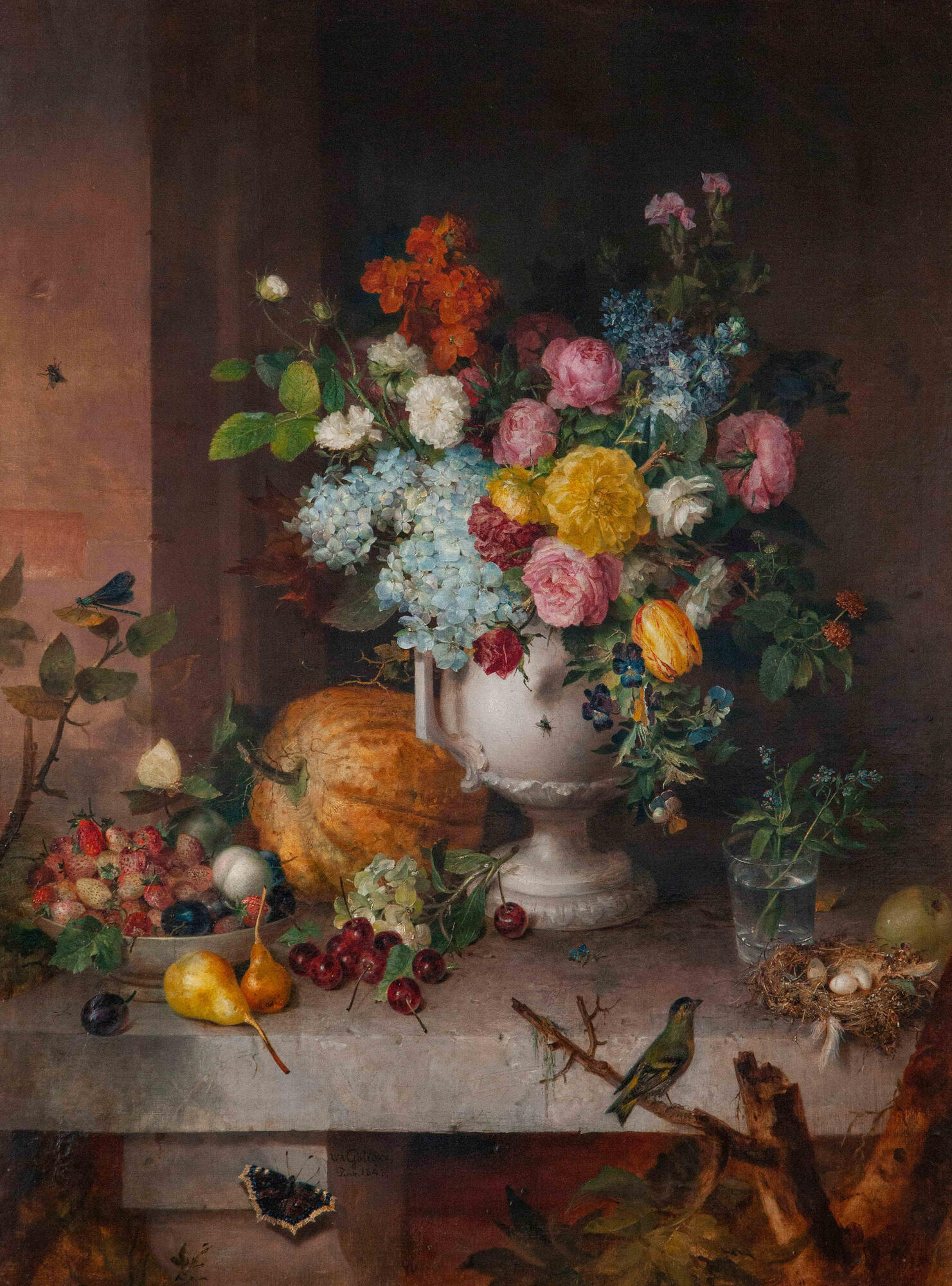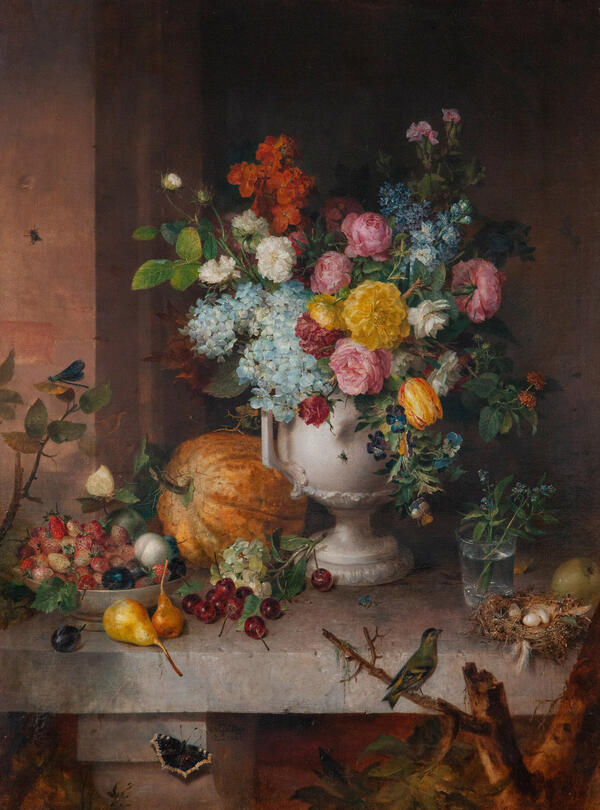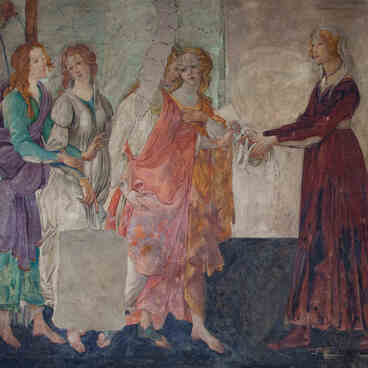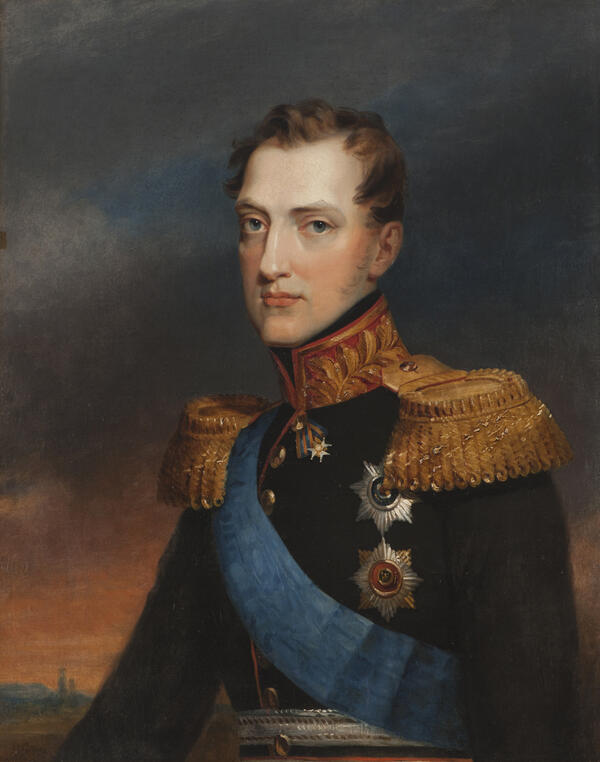The predominant genre in Nikolai Golovanov’s collection is undoubtedly landscape, while still life is represented by just a few works.
The phrase for “still life” in Italian and French is “nature morte”, which means “dead nature”. However, in the 17th-century Netherlands, where still life first appeared as an independent genre, it was known under another name — “stilleven”, which meant “silent life”. This Dutch word indicated the nature that was motionless at the time of being portrayed. Therefore, along with flowers, fruits, food, dishes, skulls, dead fish and game, Dutch still lifes of the 17th century also feature images of insects, lizards, and even birds and animals.
The still life artist Wilhelm August Golicke began his painting career as an apprentice in the studio of the famous English portrait painter George Dawe, who created numerous portraits of participants in the Patriotic War of 1812 for the Military Gallery of the Winter Palace. For some time, Golicke studied at the Academy of Arts. He took part in exhibitions organized by the Academy and the Imperial Society for the Encouragement of the Arts. He created mainly genre scenes and portraits, including portraits of eminent persons, such as Empress Alexandra Feodorovna and Count Sergey Uvarov.
In the displayed still life, a wonderful scene opens before the viewer’s eyes: a lush flower bouquet in a porcelain vase, rich cherries and wild berries, and a ripe pumpkin. The artist created an impression of a moment frozen in time by meticulously outlining every detail in the painting: the glass of water, the openwork wings of a butterfly, and the elaborately woven bird nest. In this work, everything seems to be alive and moving. The photographs from the 1950s archives show that Golicke’s still life was placed in Nikolai Golovanov’s dining room. Thankfully, by the end of his life, the musician had compiled a catalog of the works in his collection, which nowadays provides a lot of information about them. The catalog indicates Golicke’s still life as “No. 32 of the signed collection”, suggesting that, apparently, the work was previously part of another private collection. Currently, the artist’s works are housed in many major museums, including the Tretyakov Gallery and the Russian Museum.
The phrase for “still life” in Italian and French is “nature morte”, which means “dead nature”. However, in the 17th-century Netherlands, where still life first appeared as an independent genre, it was known under another name — “stilleven”, which meant “silent life”. This Dutch word indicated the nature that was motionless at the time of being portrayed. Therefore, along with flowers, fruits, food, dishes, skulls, dead fish and game, Dutch still lifes of the 17th century also feature images of insects, lizards, and even birds and animals.
The still life artist Wilhelm August Golicke began his painting career as an apprentice in the studio of the famous English portrait painter George Dawe, who created numerous portraits of participants in the Patriotic War of 1812 for the Military Gallery of the Winter Palace. For some time, Golicke studied at the Academy of Arts. He took part in exhibitions organized by the Academy and the Imperial Society for the Encouragement of the Arts. He created mainly genre scenes and portraits, including portraits of eminent persons, such as Empress Alexandra Feodorovna and Count Sergey Uvarov.
In the displayed still life, a wonderful scene opens before the viewer’s eyes: a lush flower bouquet in a porcelain vase, rich cherries and wild berries, and a ripe pumpkin. The artist created an impression of a moment frozen in time by meticulously outlining every detail in the painting: the glass of water, the openwork wings of a butterfly, and the elaborately woven bird nest. In this work, everything seems to be alive and moving. The photographs from the 1950s archives show that Golicke’s still life was placed in Nikolai Golovanov’s dining room. Thankfully, by the end of his life, the musician had compiled a catalog of the works in his collection, which nowadays provides a lot of information about them. The catalog indicates Golicke’s still life as “No. 32 of the signed collection”, suggesting that, apparently, the work was previously part of another private collection. Currently, the artist’s works are housed in many major museums, including the Tretyakov Gallery and the Russian Museum.




